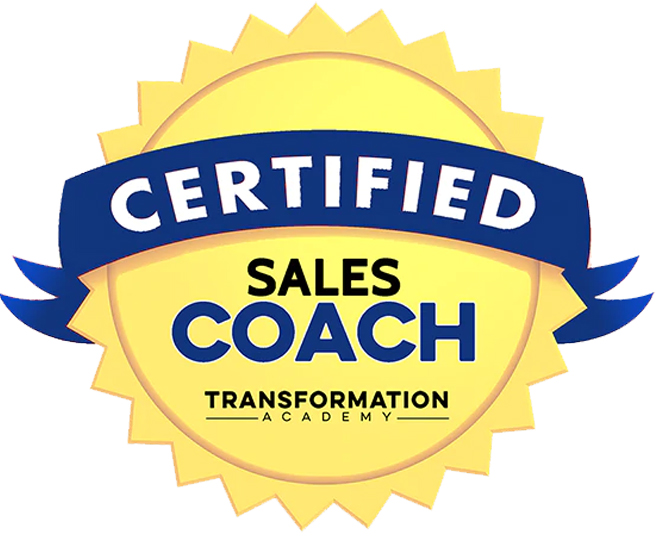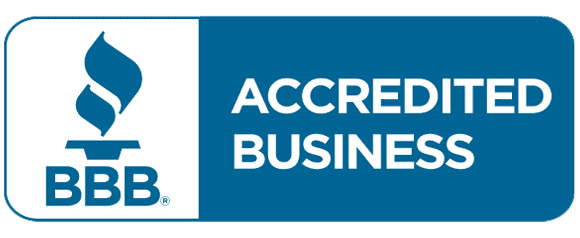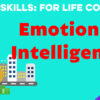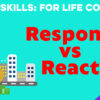Dopamine is a neurotransmitter released by the brain that plays several roles in humans and animals. Even though it has different functions in movement, memory, behavior and cognition, attention, sleep, and learning, dopamine is mostly known for its role in our mood and the pleasurable rewards associated with different activities like sex, eating our favorite food, exercising, dancing, and even shopping. It’s often referred to as the “happy hormone”, but it does much more than that. For our purpose in this course, we’re going to talk about dopamine as the chemical that mediates pleasure in the brain, as it is released during pleasurable situations, stimulating us to seek out and choose the joy of an activity or occupation. Dopamine is also responsible for people becoming addicted, in the sense that they are always seeking pleasure, so that they can reach higher and higher levels of happiness, because of how the rush makes them feel.
Have you ever heard the term: “dopamine rush” before? I am sure you’ve heard of an adrenaline rush, as something we experience when we do an activity perceived as dangerous, and we get into the fight or flight state. When we are riding a roller coaster, jumping from a plane, or facing some kind of other danger, we get an adrenaline rush. But the dopamine rush is different from the adrenaline rush because it’s responsible for our experience of happiness. Adrenaline rushes, such as those experienced when playing a sport, are based on the same fight or flight response, but we harness that rush to push to achieve our best results. This is the case because adrenaline and dopamine are close relatives. Both dopamine and adrenaline can cause serious health problems As an example, if too few dopamine molecules are released, diseases like Parkinson’s can develop, while an excess of dopamine can lead to mania, hallucinations, and schizophrenia. High levels of adrenaline are not healthy either. Too much adrenaline can cause sleep problems. The person experiencing too much adrenaline can’t relax and their body is in continuous shock mode, making it difficult to fall and stay asleep. So, no extreme is good.
So now that you know a little more about what dopamine is and its role in the body, let’s dig deeper into the role this “Happy hormone” plays in buying goods and services. I think most of us agree that we don’t have to be a shopaholic to experience a rush while shopping. This is exactly why even the most casual shopper finds it challenging sometimes to exercise self-control at the cash register. Researchers at Stanford University proved that when we see pictures of items we’d like to buy, a region of our brain with dopamine receptors is activated. So, you can imagine how strong that signal is when we actually get to see the products we like in person. And if we get to sample, see a demonstration or try some clothes on… Dopamine Flood!
In general, dopamine receptors are activated when we experience something new, something exciting or something challenging. This could range from eating something tasty to winning a competitive game, to dancing a new dance, taking a new exercise class, driving a cool sports car, etc. It enables us not only to see rewards but to take action to move toward getting those rewards that make us feel good. So, when we go shopping and see signs for things on sale, or discounts, it triggers a sensation of instant gratification. Our brain tells us, oh good! I can have this and save money too! The more we feel good about a sale, the more likely it is that we will continue to shop. But afterwards, similar to alcoholics or drug addicts, when the dopamine rush ends, we often feel guilty and may question our choices. To get that high and the good feeling again, we need to go back for more… in our example, more shopping.
We typically decide on a purchase very fast. Actually, it only takes us 2.5 seconds to make a decision to buy something, and without much rational thought. When attracted to the SALE tag, we don’t default to the usual rationalization and weighing the options method that we would use in other circumstances. This is because these types of impulsive decisions are often made subconsciously, not in our conscious mind. When we make a purchase and feel that excitement, there is a spike in brain waves that occurs, which results in deep emotional investment or engagement in a specific product or even service.
In most cases, those impulses are triggered by our previous experiences with specific products, services, or brands. They can also be triggered when we spot items on our wish list, something that we dreamed about for a long time. In most cases, depending on the purchase, we are not necessarily addicted to the things we buy, but rather to the expected thrill of the activity we plan to do. MRI studies of brain activity like we’ve discussed previously, suggest that surges in dopamine levels are linked much more with the anticipation of an experience, rather than the actual experience itself. Consequently, feelings of wellbeing, of pleasure and even abundance happen sometimes when we just think about shopping, and this can happen days or even weeks before we even buy anything. So, the anticipation of the activity or of the consequences of that action is what gives us pleasure in the first place.
Now, when we finally get to make a purchase, during the sale itself, studies have shown that our bodies’ nervous system – which is the system that triggers our fight or flight response – takes control of us, like a reflex. As a result, a heightened response in the body is created, similar to the one we used to have thousands of years ago when we lived in caves and encountered dangerous predators. It can be difficult to control our impulse to buy an attractive item, when our brain is switched into the flight or fight mode, as in the “competitive mode.”
This occurs due to the fear that many experience, of missing out on a purchase. The thought process for this goes as follows: “If I don’t buy it, someone else will.” This fear is also known as the loss aversion theory, as we don’t like to lose anything and especially, we don’t like to lose to someone else. Specifically, in the case of a sales drive, it gives us a compulsion to buy an item, because not buying it presents us with the threat of a loss. As a result, we irrationally overvalue losses approximately twice as much as gains. We tend to think this way: “Oh, but if I don’t buy that… I will lose so much. I will lose the opportunity to impress that specific someone ( that can be yourself) and impressing that person suddenly is twice as important to me when compared to the money I am willing to spend on this.” Why do we think like this? Well, it’s because consciously or not, most of us calculate purchases based on how it’s going to validate or even upgrade our social status, and ultimately our social status it’s naturally linked with reproductive success. Just like a peacock is trying to attract a mate with its beautiful feathers, we too, at the subconscious level, are making these impulsive purchases, often for the same reasons: to help us find a mate and to help us with our social status.
On the other hand, some shoppers experience a slower heart rate, a state of pleasurable relaxation and not so much exhilaration while shopping.
We’ve all heard the term “retail therapy”, as a way to relax and escape from daily problems. And this, just like the deep breaths that smokers take when inhaling cigarettes, can create dependency as well.
Many marketers know that dopamine it’s one of the most addictive substances known to men and it has clear seductive effects over our purchasing decisions when we see something that we really like. But just like with actual drugs, right after our brains are suddenly flushed with pleasure, and it took us only 2.5 seconds to make that purchasing decision, once we close the computer, or our attention on our phone is switched to something else, or as we walk out the store with the bag in our hand, that euphoric feeling caused by the dopamine, starts fading away and we start questioning if we really needed to make that purchase or put that order in.
“Mirror neurons” don’t work by themselves in making us imitate other people’s buying behaviors. The neurons work together with dopamine. Have you ever been walking through a shopping mall, and all of the sudden you see in front of a young teenage – focused store, a group of teenagers laughing, young and beautiful, all wearing really hip, beautiful clothes, all looking fantastic and healthy, and somehow you are attracted to their crowd. If you pay attention you may see some other people walking by, slowing down and lingering in the vicinity of this group.
Although you and I are adults now, we can still be attracted to their energy. All we need is to take a look at them and dreams of being young again, and fitting into the clothes that they are wearing, comes flooding in. Now, imagine being a teenager instead. What influence does their image have on you now? As a teenager, you want to play it cool, but once you pass by them in front of that store your mirror neurons fire up, and you can imagine yourself among them, feeling what they feel, being popular and desired and at the center of attention. In this case, you’re going to walk into that store, and you’re going to notice the ambiance inside, with cool music, and a specific scent, an all you can dream of is to be like those teenagers that shop in that store, and the only way you can see yourself clearly in that moment, is to purchase the same clothes they wear.
So, as your teenage self, you walk into the store, you pick up a few items and you approach the counter to pay. At this time, your dopamine levels are extremely high. Once you grab the bag with the store logo you can see it all coming together: this new purchase is going to make you look and feel like those teenagers outside. You are going to be one of them.
So, you go home and a few days later, you’re walking down the street with some friends and a familiar smell comes to your attention. You look around and notice that it’s another one of the same stores that you shopped in the other day. In that moment your brain brings you back to that dopamine rush that you experienced when you were last inside that store, and again the mirror neurons draw you back inside to get another shot at pleasure and reward.
This type of dopamine reaction is how brand loyalty is built, and poor teenage brains have no idea, nor do they care, that the marketers planned all of this out with a really detailed and smart strategy focused exactly toward them.
So yes, the mirror neurons, together with dopamine, are a strong reason why we make purchases of any kind, in the first place. Now, how can you use this information in your business?
You likely know that by choosing the right images, colors, videos, graphs, tastes or smells in your marketing campaigns, on social media or even in person, through the clothes you’re wearing, through the fragrance you’re wearing, through the way you present yourself and your service packages, you can take your potential clients right back to when they were able to fit into that pair of jeans, or that special dress, or right back to when they were able to fully enjoy happy moments with their loved ones. I hope you see the power of understanding the way your brain does purchasing reasoning. By understanding this you will be able to be more successful at selling to others. By understanding not only what strategies to use, but also, understanding your customers and what triggers them to buy.
Author: Sanda Kruger
Sanda is an entrepreneur, real estate investor, health coach and professional dancer. Sanda is an entrepreneur with more than 20-year experience in business development and project management in the fields of life, health and fitness coaching. She is also a real estate investor and a banker, who learned outstanding adapted business strategies, sales and marketing techniques, communication, and goal setting skills, hands-on, through life and work experiences. She is a certified fitness professional and is the creator of two original fitness programs, called BellyCore® Fitness and AquaCor®.








